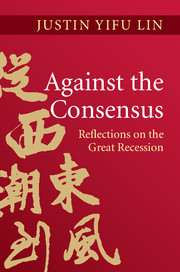Book contents
- Frontmatter
- Contents
- List of figures
- List of tables
- List of boxes
- Preface
- Overview
- Part I What Caused the 2008–9 Global Crisis?
- Part II A Win-Win Path to Recovery
- Part III How Poor Countries Can Catch Up: Flying Geese and Leading Dragons
- Part IV Toward a Brave New World Monetary System
- 12 The evolution of the international monetary system
- 13 Emerging pressures and policy challenges
- 14 (In)stability of the emerging multiple reserve currency system
- 15 The thinking behind the main reform proposals
- 16 Costs and benefits of major reform proposals
- 17 A proposal for a new global reserve currency: paper gold (“p-gold”)
- 18 Why it still matters
- References
- Index
12 - The evolution of the international monetary system
from Part IV - Toward a Brave New World Monetary System
Published online by Cambridge University Press: 05 June 2013
- Frontmatter
- Contents
- List of figures
- List of tables
- List of boxes
- Preface
- Overview
- Part I What Caused the 2008–9 Global Crisis?
- Part II A Win-Win Path to Recovery
- Part III How Poor Countries Can Catch Up: Flying Geese and Leading Dragons
- Part IV Toward a Brave New World Monetary System
- 12 The evolution of the international monetary system
- 13 Emerging pressures and policy challenges
- 14 (In)stability of the emerging multiple reserve currency system
- 15 The thinking behind the main reform proposals
- 16 Costs and benefits of major reform proposals
- 17 A proposal for a new global reserve currency: paper gold (“p-gold”)
- 18 Why it still matters
- References
- Index
Summary
The international monetary system comprises the mechanisms and institutions that organize and regulate foreign exchange systems and cross-border monetary and financial exchanges and flows. An international currency serves as a store of value (allowing transactions to take place over time and across the world), a medium of exchange (substantially increasing efficiency over barter), and a unit of account (facilitating calculations of valuation and conversion). As a store of value, an international currency facilitates official transactions and use as a reserve currency, while the other two functions underpin the use of the international currency in both domestic and international transactions. The distinction between “reserve” and “international” currencies has grown more important with the rapid expansion in the size and role of private flows in the world economy.
In antiquity, much of the trade between countries and regions was conducted as barter. As the volume and diversity of trade grew, however, people needed a convenient common commodity to settle transactions. Metals were an obvious choice, for their durability, innate value as a material for making things, and ability to be fashioned into easily portable coins. Archaeologists have documented the wide use of metal coins around the world during antiquity; eventually, silver and gold became the bimetal choice.
- Type
- Chapter
- Information
- Against the ConsensusReflections on the Great Recession, pp. 149 - 159Publisher: Cambridge University PressPrint publication year: 2013



